On Bramante
Pier Paolo Tamburelli | The MIT Press | $39.95
On Bramante is a dense, rich, strange, and provocative book. Written in Italian and translated into English before the Italian edition has been released, the book runs to more than 205 pages of intense prose with an additional 66 pages of often-lengthy footnotes. The main text is divided into 49 sections, often short, accompanied by a set of 35 images, which range from key archival documents to analytical drawings in the style pioneered by the magazine San Rocco and irreverent film stills and artworks. These function less as evidence in a case and more as illustrative visual rhetoric.
An additional 32 beautiful photographs of Bramante’s work by Bas Princen bracket the book in a perfect symmetry of two blocks of 16. Unfortunately, these images, which were made during an excursion organized by San Rocco and led by Tamburelli eight years ago, receive little commentary in the text. (Full disclosure: I was one of the 70 architects on that initial 2014 bus tour around Italy in search of Bramante’s work.) Princen’s images highlight the proportional logic that governs the book and express the “rationalist” position of the author.
The first half of Tamburelli’s book addresses that aspect of Bramante’s work that the author, borrowing from Giorgio Grassi, calls “logical,” while the second half addresses the aspect of his work that Tamburelli labels “political.” Throughout, the reader is presented with a feast of theoretical ideas, ideological provocations, close and often highly poetic readings of documents, all of which might suggest the book is about Bramante—but which the author tells us at the outset it is not. Instead, the author engages in the honorable tradition of attempting a retroactive manifesto for architecture through an impassioned and obsessive (even paranoid) engagement with existing artifacts in a similar manner to Rem Koolhaas’s Delirious New York or Robert Venturi and Denise Scott Brown’s Learning from Las Vegas. The result makes something long gone come alive with new significance through the interpretative and projective act of writing: an act that links architectural design to a larger realm of social, political, and ideological ideas.
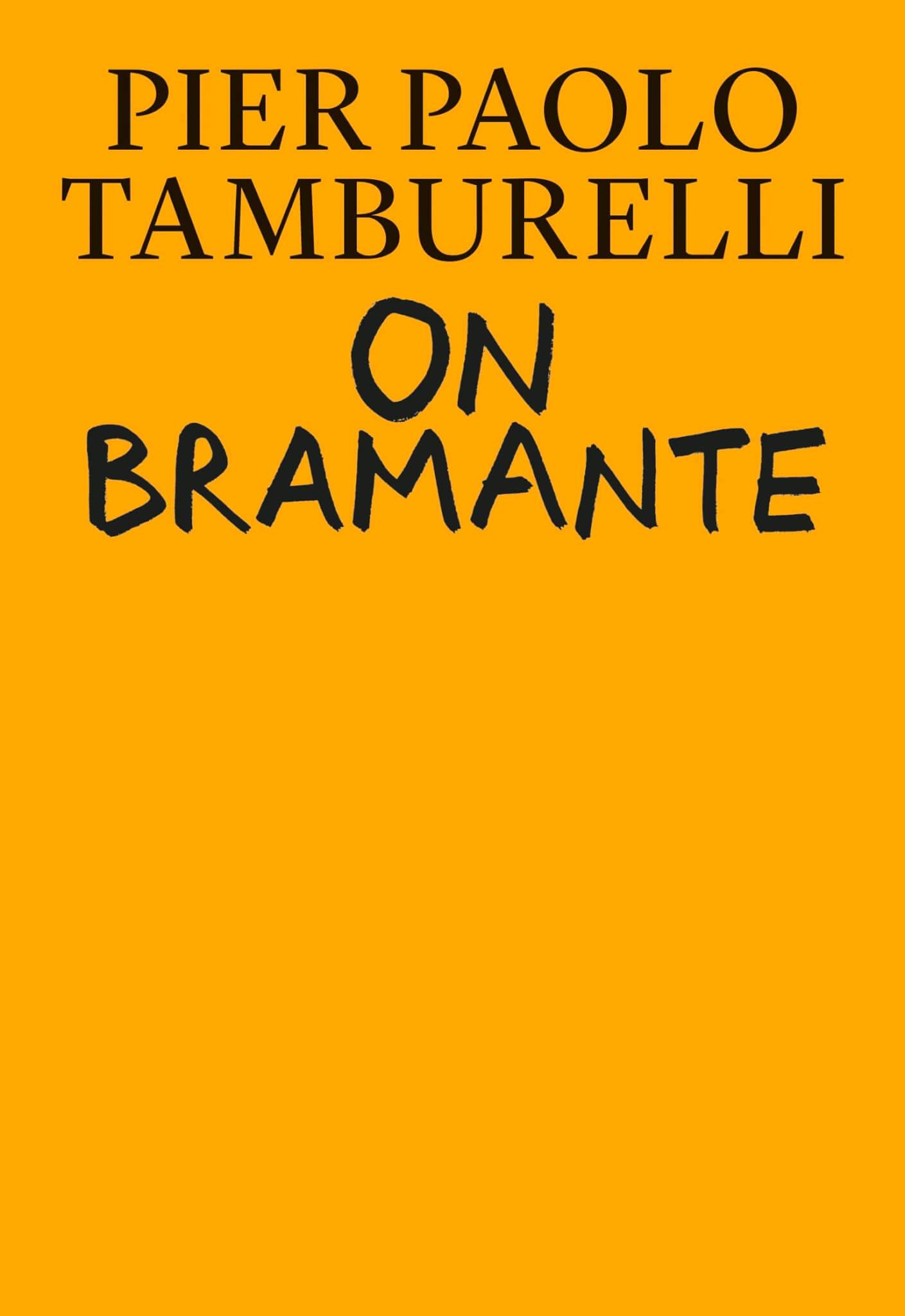
Readers are warned at the outset that what follows is not history or the kind of criticism offered by non-practitioners, but instead a book by an architect, about architecture, for the betterment of architecture. It is then, I would argue, a work of theory. The reader is further informed that theory in architecture is by and large the output of architects and that this discourse is more abundant in architecture than in other, more popular arts because architects have a greater need to reflect on the fundamental entanglements with power, money, labor, and politics that define their art more than any other; and theory aids this reflection.
Theory of this kind has been dormant for over three decades. Where architects from the late 1960s to the mid-1980s aspired to write big books which link architectural design to a larger realm of social, political, and ideological ideas, the post-ideological and post-political era of triumphant neoliberalism supported by centrist governments from the fall of the Berlin Wall to the 2008 crash brought this tradition to a halt, leading to what some have called architecture’s “a-theoretical phase.” Architects still write, but perhaps they only file cautiously ironic and evasive texts that seem, to borrow a remark by Michael Meredith from Log 46, speaking of new generations of architects in the United States, to “desire to not have ideology.” And as Joan Ockman has argued persuasively, the rise of research and books modelled on S,M,L,XL or FARMAX and the rise of curation have been poor substitutes for theory because of their complicity with market logics.
In a rare theoretical feat, Tamburelli’s argument emerges from his paranoid reflections on Bramante but supersedes Bramante to achieve a more general relevance. The normative thrust of that argument is that the architect today should be a cynical, nonchalant, indifferent, and disenchanted formalist as well as a cunning opportunist, pragmatist, and political realist, and should aspire to create big, awe-inspiring works whose effort and scale constitutes their simultaneous violence and beauty. The author asks the reader to assume a very different morality from the one that dominates within today’s neoliberalism—or, rather, to substitute politics for moralizing. We are told that “in architecture moral questions are always excuses” and that architecture is not responsible for “doing good … [like] feeding poor children, comforting widows, saving panda bears from extinction.”
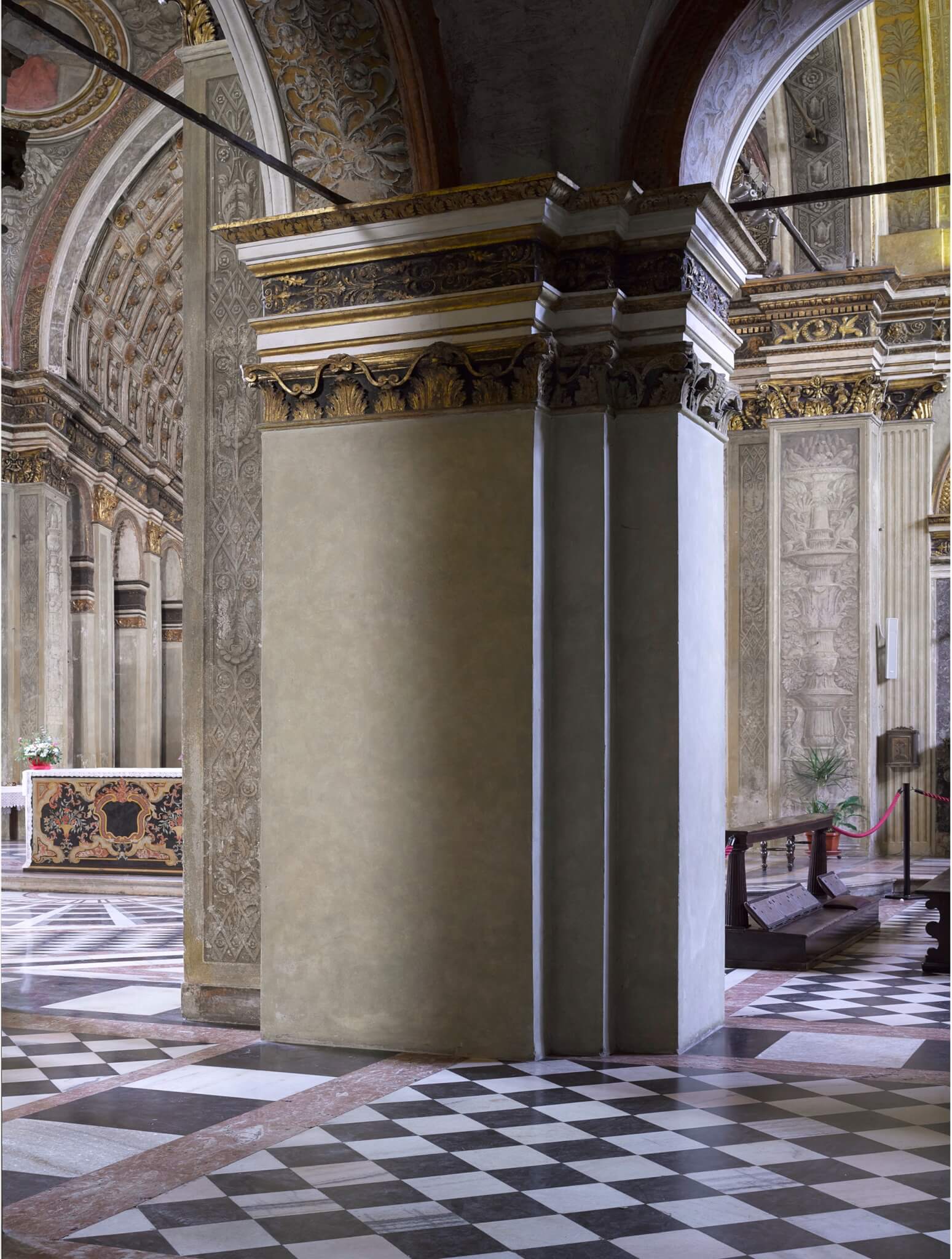
Rather, architecture is political “indirectly, as art.” Architecture is not responsible for life, Tamburelli writes, because architecture does not determine life. The Foucault of Discipline and Punish, he tells us, was wrong: “Architecture has never had this unlimited power.” And so, because architectural form does not “directly” or “entirely” determine how people act, architecture, the author concludes, has absolutely no responsibility for whether the acts of individuals are just or good. Instead, the architect, aspiring to making forms and spaces that will ultimately outlast any particular individual, aims to represent the very political problem that defines architecture. In this way architecture would, the author tells us, “expound a more advanced political order” through a rigorous, logical, and thoroughly disenchanted formalism, and such a formalism would enable the architects to both align themselves with power and represent power through their work. Tamburelli’s book postulates a politics that runs counter to the prevailing morality that dominates so many architectural institutions, schools, museums, journals, and associations today.
Yet for all the book’s confident assertions about its political convictions, it is ultimately less convincing on some of its philosophical fronts. It links its quasi-Schmidtian-quasi-Machiavellian politics to a philosophy of the relationship between form and meaning that is derived from an interpretation of the work of earlier Italian rationalist architects of the 1960s—Aldo Rossi and Giorgio Grassi, above all—in a manner that has been explored for the past decade in the writings of Tamburelli’s former compatriot and colleague Pier Vittorio Aureli. Tamburelli’s historically revivified propositions would be more robust if he had engaged in a dialectical and dialogical response to the contemporaneous and subsequent criticisms of these arguments, including that form does relate to behavior, but that it does so indirectly through evolving habits of use.
Similarly, Tamburelli asserts that High Renaissance classicism, properly understood, constitutes a neutral framework that is universally relevant and open to all, when decades of feminist and postcolonial theory have contended that such universalism coming from European humanists was, in fact, a disguised Westernism. Tamburelli is not ignorant of postcolonial theory, but his text does not address it directly enough. His response is to say that while universalism certainly accompanied colonial violence, it is not reducible to it, and that its promise of freedom and equality is better positioned to prevent further violence in the future than a tribalism of difference. This response might seem insufficient in the eyes of postcolonial critics who would, I expect, argue that there was never a period in which colonial violence was complete, but that it has always been continually reproduced by cultural dispossessions that deny local cultures their differences. Such critics would argue that European classicism’s claims to universalism are a persistent embodiment of neocolonial violence. Tamburelli’s position deserves a hearing, and his critics deserve more than a paragraph if his arguments are to persuade rather than simply decide.
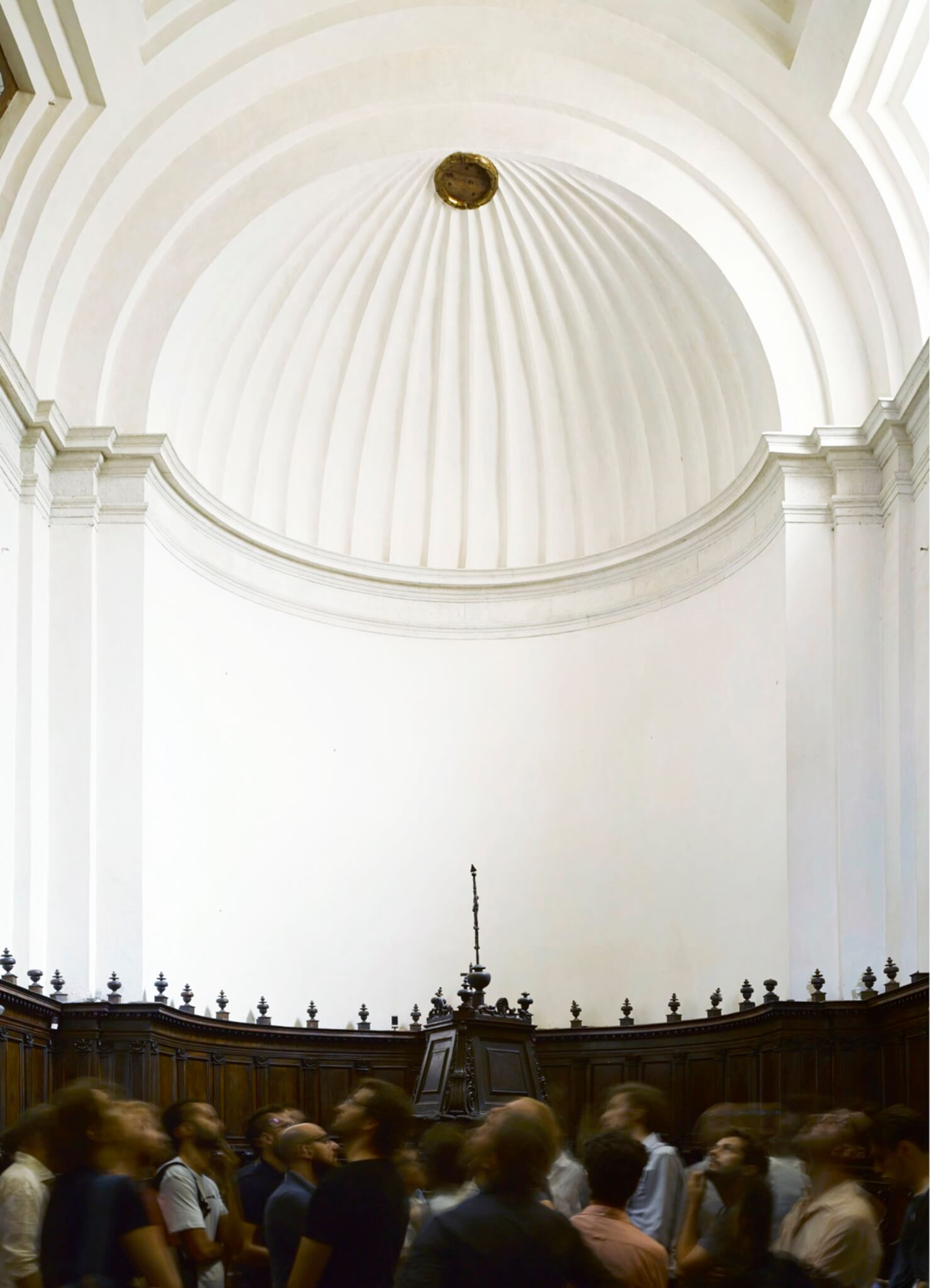
Tamburelli’s book might be said to be a window into a specifically Italian discourse that is rarely understood by English-speaking readers. The speed of its translation is highly unusual given that so many of the classic late 20th century texts of Italian architectural discourse have not been translated into English—including many by Giuseppe Samonà, Ludovico Quaroni, Manfredo Tafuri, Aldo Rossi, Giorgio Grassi, and Vittorio Gregotti. Tamburelli’s book thus channels political sensibilities from a very specific geographical context. As he put it: “When all is said and done [the book] is a defense of architecture, and in a certain sense, of Italy…” And indeed, there is here something of the deeper culture of the primacy of politics in the Italian peninsula whose history of city-states, warring factions, difficult unification, and delayed modernization.
On Bramante is strange because its voice and genre shift in unusual ways. Many of its footnotes show Tamburelli’s extensive knowledge of existing literature on Bramante, with their parallel commentary on minor matters that ultimately lands as gratuitous. Yet at other times, any semblance of scholarly protocol is completely abandoned: In many instances, sentences or even entire block quotes are placed within the text (as if they were the author’s own). Their citations are given, but without commentary or evaluation the voice of the author is collapsed into the voices of those he is citing. Tamburelli tends to ventriloquize and psychologize Bramante too, and when concepts like classicism and formalism are revised in novel ways, such revision occurs without parsing of the standard interpretation of these concepts.
If the scholarly protocol could be summarized by the ethical requirement in the modern university to contribute to an ongoing “conversation,” and to frame the “I say” by contrast to the “they say,” then there is very little of this in the book. The more distinct impression is that one is reading a work of literary fiction rather than a work of scholarship. Indeed, despite all the careful, poetic readings of documents in the book, no evidence at all is offered for one of the most central conjectures of the book: that Bramante is disenchanted and that his many centralized church designs merely cynically advance a commonplace set of ideals that Bramante does not believe in.
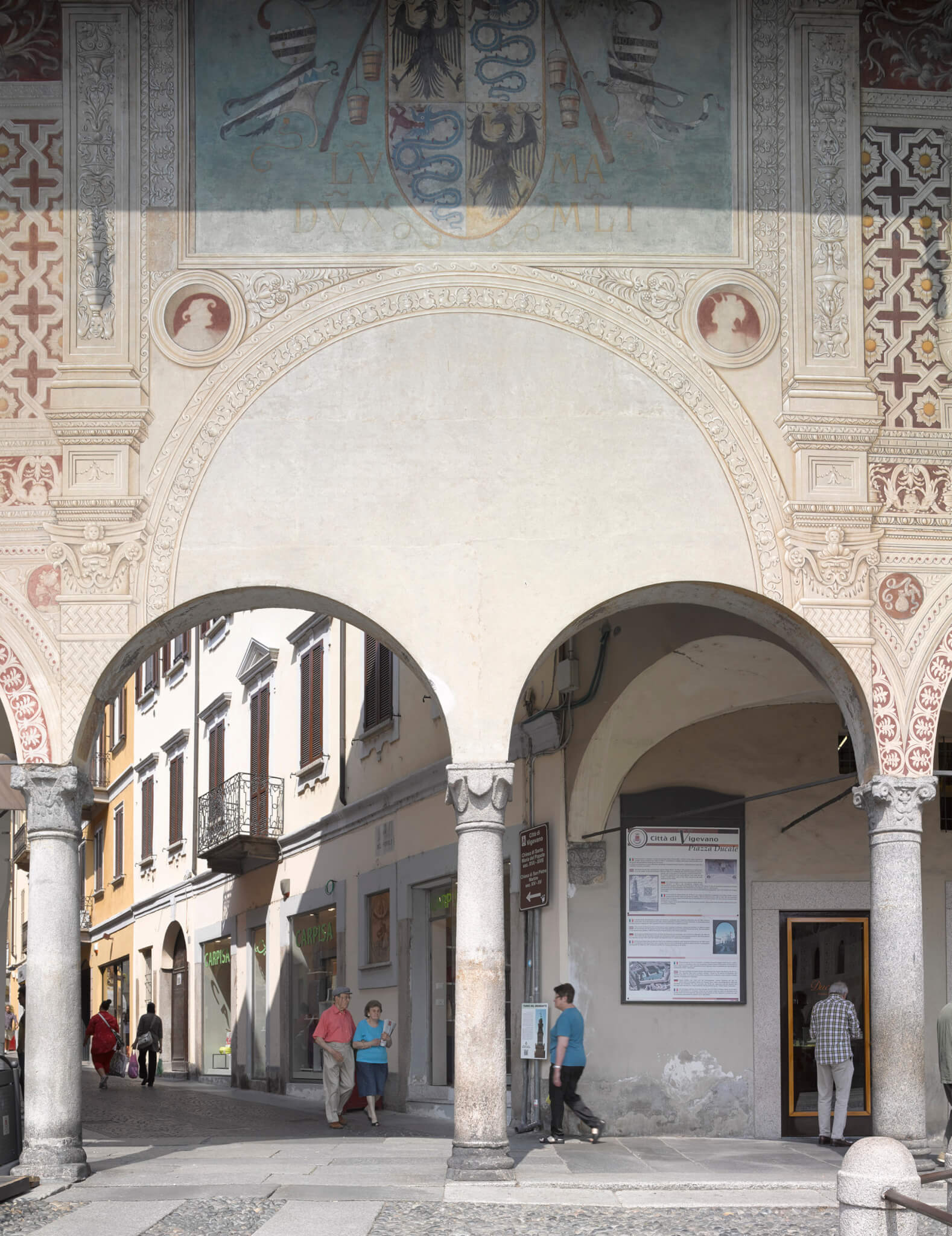
In many ways Bramante is the perfect figure upon which to base a theory of architecture, precisely because we have been left with so little textual documentation about his work and thought. (While on the original bus tour, the running joke of the trip was the number of times Tamburelli and his colleagues repeated the phrase “This is possibly Bramante.”) No doubt there is some truth in Tamburelli’s Bramante; as a talented interpreter, he has constructed a plausible Bramante, who was indeed less educated than other architects, who aspired to large-scale constructions, and who clearly engaged with power, money, and politics in his relationship with Pope Julius II and in his work on St. Peter’s. What is less plausible—and what art historians might reject—are the philosophical conceptions of space, perception, experience, and meaning that Tamburelli foists upon him.
While the genre of the retroactive manifesto—which includes Robert Venturi’s Complexity and Contradiction and Colin Rowe’s Collage City—is the model for Tamburelli’s project, there is one important difference for On Bramante: the absence of concrete design projects. Tamburelli acknowledges that “there are no practical proposals to be found here.” Given this absence, one is left to assume that the example this theoretical text aims to support is that of Tamburelli’s own practice baukuh. But without constructing a more explicit link between the theoretical argument of the book, and the work that it may support, Tamburelli avoids difficult questions that require answers if his theory is to become legitimized as a theory by an architect about architecture and for architecture’s improvement.
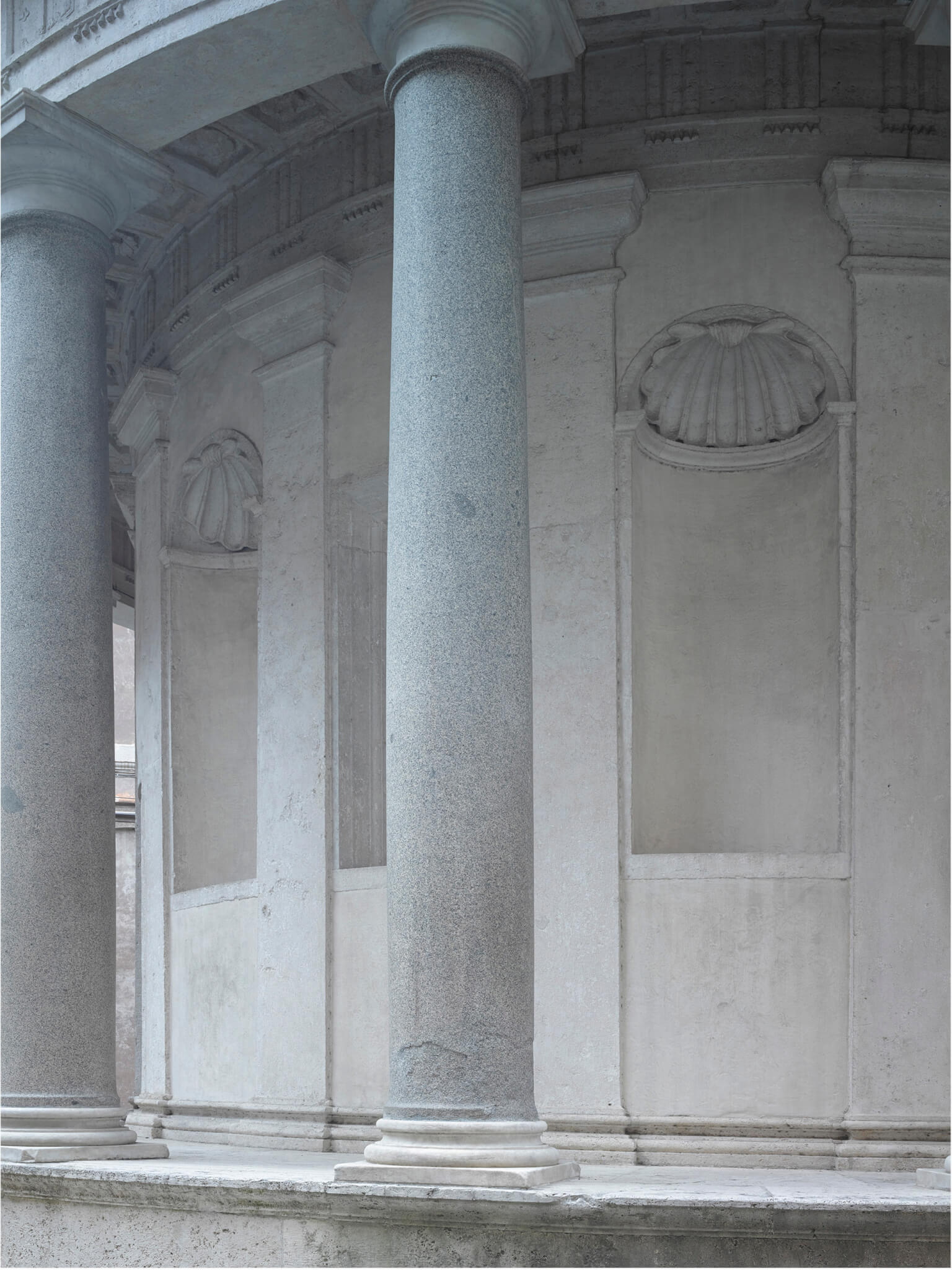
To what degree can an architecture composed of orders and constructed in a context in which it could be spatially generous only because it was built by powerful aristocratic families, princes, and popes be used as a model for today, a time in which architecture is built without the articulation of classical orders, is possessed by varying social classes, and maintains no patrons who are interested in paying for the generosity of abundant, undetermined voids? What happens to this attitude now that architecture is performed as a technocratic endeavor in which functionalist and problem-solving attitudes predominate within a service-oriented profession?
Tamburelli has not yet engaged with these questions. He has constructed a theory that neatly describes his own attitude without the dialectical engagement with opposing views, without the work of persuasion, and without addressing what contemporary architects can practically learn from Bramante. Without elucidating specific aspects of contemporary design, this work of architectural theory is unlikely to become as influential as those of Venturi, Rowe, and Koolhaas were in their time.
The book might more accurately be called Under Bramante, as Bramante, not eclipsed by the author, remains the dominant figure. We await, I think, a book that extracts the central theoretical propositions this engagement with Bramante produced and that moves out from under the shadow of Bramante. Such a book would push ahead on two fronts: on a philosophical front to elaborate a response to more difficult philosophical disagreements over the various claims about perception, experience, and meaning being asserted; and the other on a design front, to articulate more explicitly how a method of design can be wedded to this theoretical construction. Without the latter, theory cannot have widespread purchase and persuasive power within the field at large, and without the former, it cannot be robust and lasting.
Joseph Bedford is associate professor of history and theory at Virginia Tech, the founding director of the Architecture Exchange, and the author of Is There an Object-Oriented Architecture?: Engaging Graham Harman.











